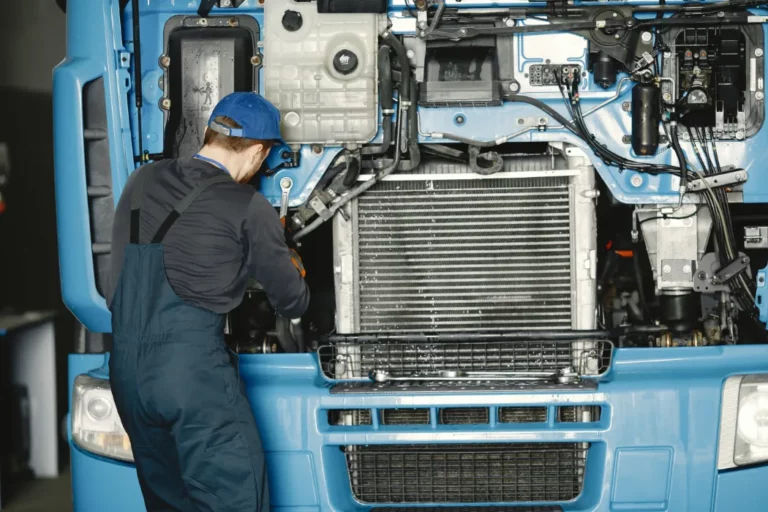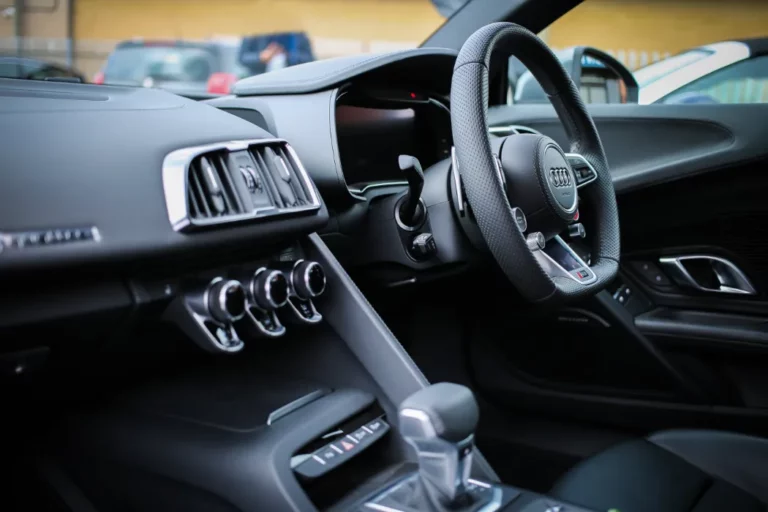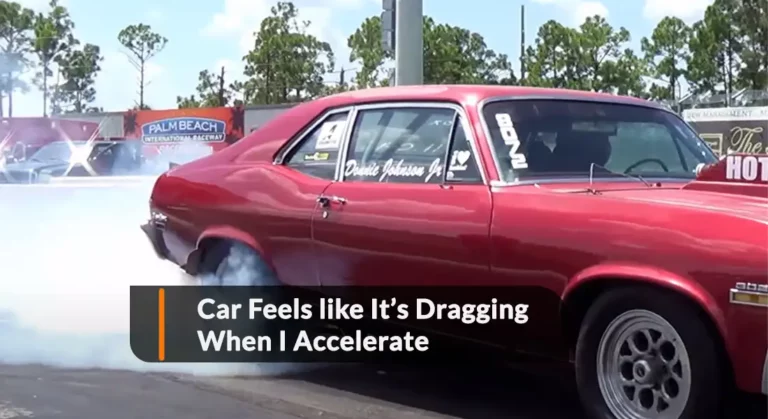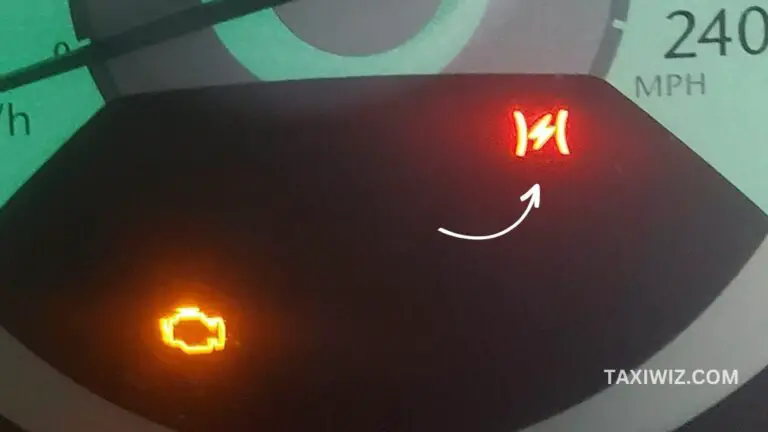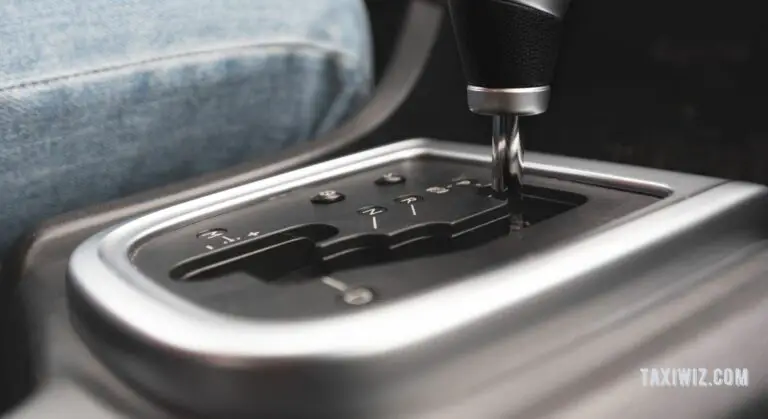Oil In Coolant Reservoir But Car Not Overheating – Why?
Oil in coolant reservoirs is a common circumstance while driving your car. Primarily, overheating is the main symptoms, especially in older cars. But you should also know that overheating is not only the symptoms here.
Moreover, the coolant’s function is to prevent the car from overheating. If any other fluid mixes with it which do not belong to the coolant nature will cause several engine problems.
Here in this article, we will discuss every detailed reasons and solutions for oil in coolant reservoir but car not overheating. Keep reading.
Other Symptoms Of Oil In Coolant Reservoir
This issue may cause severe engine damage if you keep neglecting it for a longer period. You can detect this problem by checking the oil conditions, pressure tests, or scanning tools.
It will be a good idea for you to use a scanning tool to detect DTC. This will help you to detect the trouble codes indicating the problem.
Moreover, you can also detect them by noticing a few symptoms. Sometimes one symptom can indicate several issues. But primarily, it will alarm you to check for oil mixing with coolant issues.
Low Level Of Coolant
If oil contaminates the coolant, this will cause a gradual decrease in the coolant level.
Noisy Engine
Sometimes strange sounds come from the engine after the oil contamination. Most of the time, the engine produces knocking noises.
The Engine Light Turns On
If the issue is with the PCV valve, the engine light will illuminate. This light will indicate that there might be an issue in the coolant reservoir.
Milky Substances
This is the issue that strongly indicates the oil in the coolant reservoir. You will notice a thick milky substance present in the reservoir.
Sweet Smell
If you see the coolant link visually, there is a high chance that the coolant has missed the passageway. The sweet smell exactly comes from antifreeze, and you can figure it out more often.
Read Also: Headlights Flashing When Car Is Off:
Oil In Coolant Reservoir But Car Not Overheating: 5 Reasons To Check
The common reasons behind the issue are
- A blown head gasket
- Worn engine bearing
- A damaged cylinder head
- A leak in the oil cooler
- Overfilling of coolant
Oil and coolant both have fully different characteristics. Mixing both means decreasing the ability of their functions. Surprisingly, in some cases, overheating doesn’t occur because of the proper flow control of the coolant. But issues can be severe that can waste your time and money.
Let’s see several reasons behind the oil in the coolant reservoir but the car not overheating and their solutions:
1. Blown Head Gasket
The prime function of the head gasket is to ensure a barrier between water and engine oil. Blowing off this means a leak that leads to the contamination of engine oil with coolant.
Normally overheating occurs in this issue. But sometimes, the coolant can keep the car safe from overheating by flowing on the system.
Usually, pre-ignition and detonation can both result in high pressure and heat. Thus, it may end up blowing the head gasket. Aging is another reason for the faulty head gasket.
Besides, rapid temperature changes and incorrect installation of gaskets can also cause this issue.
The leaks in the head gasket may seem like this image:
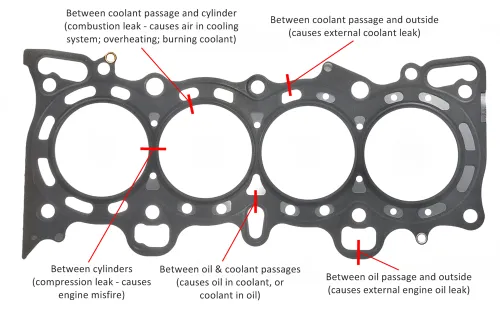
Solutions
- Check for damage and cracks and repair them
- If the issue is too severe to repair, you have to install a new one
- Follow the service manual for a proper installment
Here is a YouTube video that may help you to install a head gasket:
2. Damaged Cylinder Head
The cylinder head typically cracks from the extreme heat of the engine and some external reasons. However, these cracks make a leak in the head and allow the oil to flow through the coolant.
This problem mainly occurs due to operating in stressful conditions. Also, the failure of the head gasket has a significant role in damaging the cylinder head.
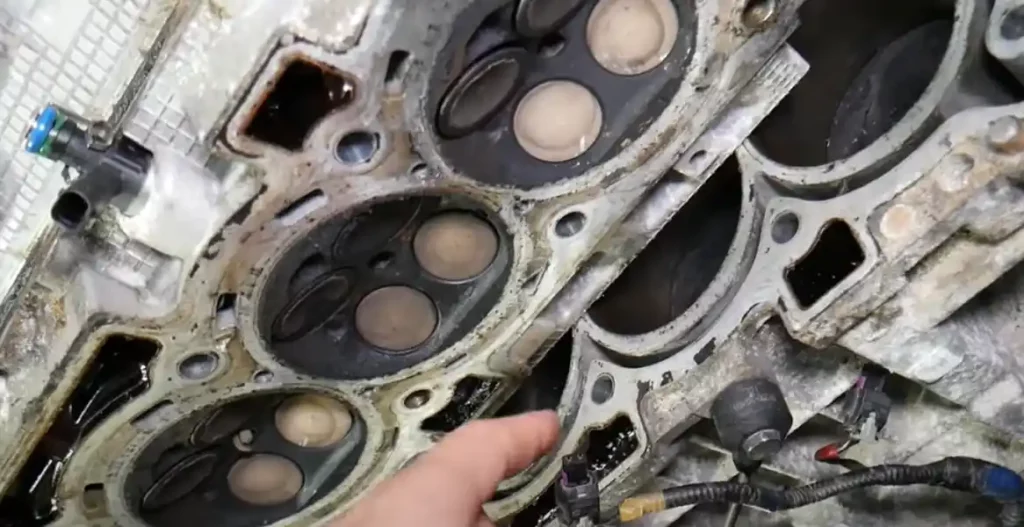
Solutions
- In most cases, you should have to replace the cylinder
- For the minor cracks, you can repair them by pinning
- Welding is the proper solution for large cracks
- If the cracks are too many, you have to replace the head
Read Also: Turn Signal Not Working But Bulb is Good –
3. Damaged Engine Bearing
The bearings are an essential component because it controls the movement of the engine. However, if the bearings are worn out, you will see the engine oil flow through to the coolant. The oil appears in the reservoir most of the time.
Generally, physical contacts between the crankshaft and bearing are the main reason for wearing out the bearings. Sometimes the origin of the causes comes from external sources.
Besides, this issue can arise from a lack of lubrication and oil supply. Also, misalignments of bearings can cause this issue.
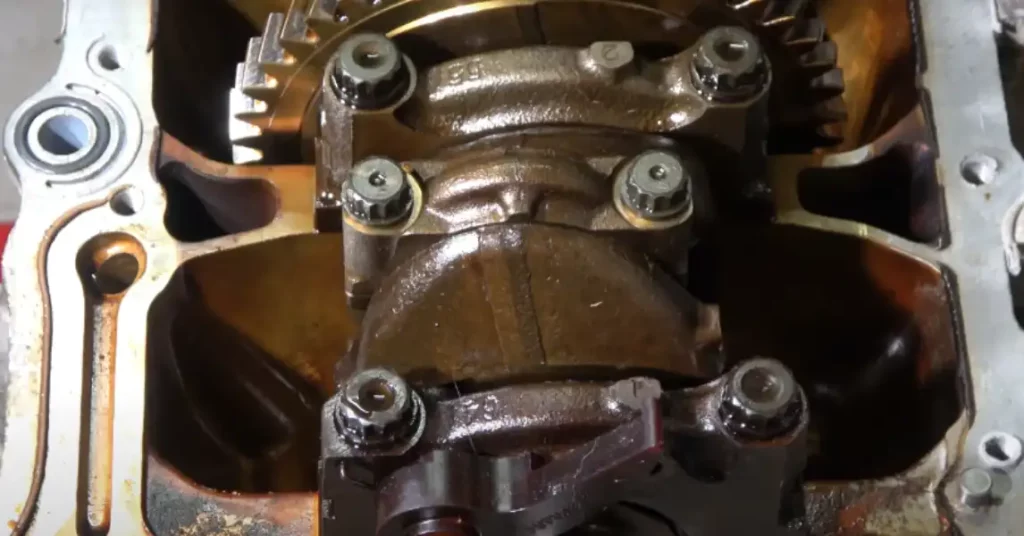
Solutions
- First, change the bearing materials that may help to prevent damages
- Clean the bearings in case of foreign matter
- Use high-viscosity oil
- Always try to use bi-metal
- Check for the clogged oil cooler and clean it frequently
4. Leaky Oil Cooler
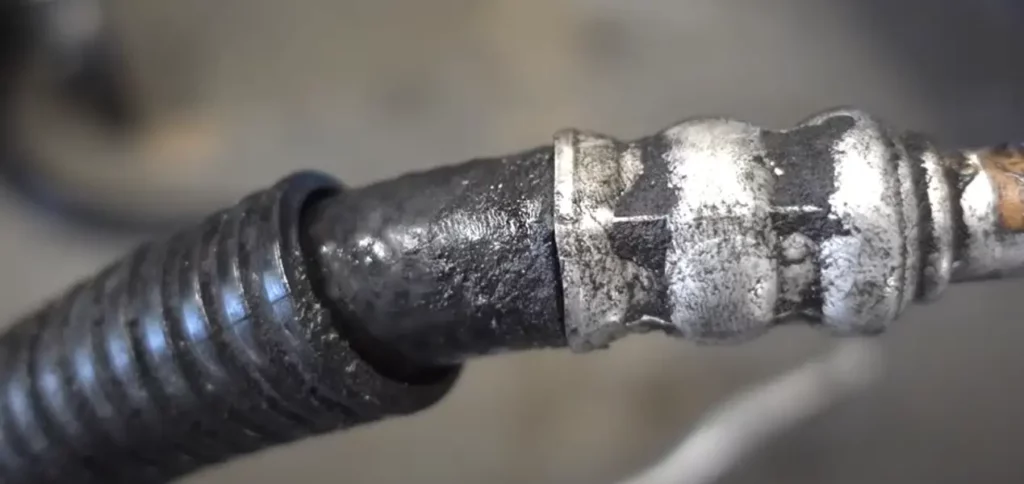
Cracks and leaks are pretty common in this case. Generally, it lasts for years without experiencing any external damage. In most cases, the car’s vibration plays a vital role in causing cracks in the cooler.
However, the problem is more common in old car models. This problem is severe when oil contaminates the coolant. You will feel a power loss due to the decreased ability of lubrication. But overheating doesn’t occur in this case because of the proper flow of coolant.
Solutions
- Inspect the cooler for potential leaks. If you find any, seal them
- If the leakage issue is impossible to fix, replace the damaged cooler with a new one
Read Also: Car Heater Blowing Warm Air Not Hot: Causes and Solutions
5. Overfilling Of Coolant
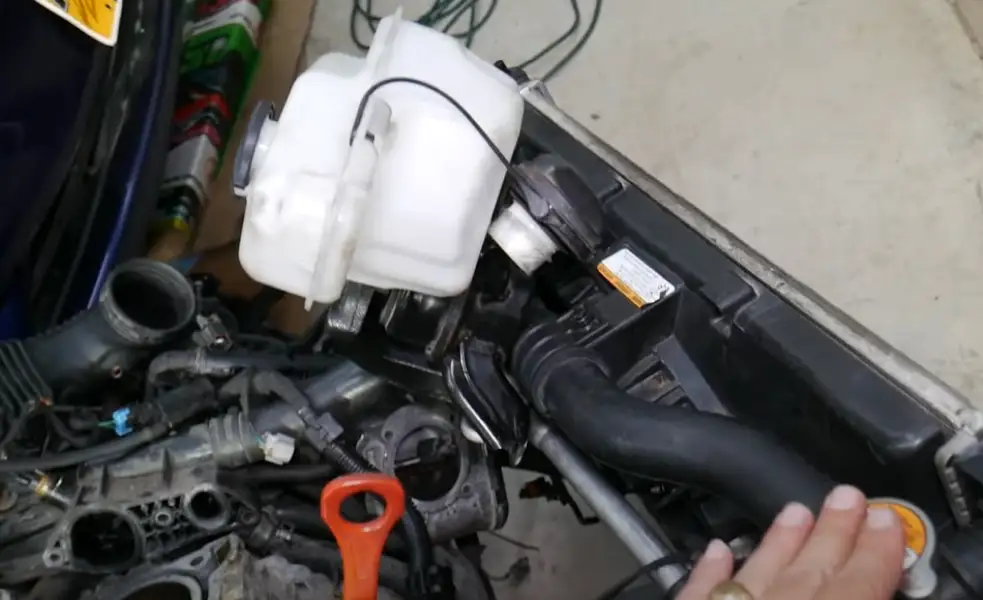
Overfilling is an issue that has no connection to the car’s internal parts. It usually occurs whenever you change and fill the coolant. However, this issue doesn’t look more prominent, but it can lead to serious harm to your car.
Solutions
- As overfilling fully depends upon you, you may avoid the issue by fully focusing at the time of filling
- If there is an excess amount of coolant present, draining them will fix the whole issue
Frequently Asked Questions (FAQs)
In this FAQs section, we will answer the common questions related to coolant reservoirs.
What Is The Replacement Cost Of A Coolant Reservoir?
Usually, the cost ranges between $412 to $437. However, the cost may vary depending on the labor cost and the conditions. You have to count $59-$74 for the labor cost. The parts are $353-$363.
Can You Drive a Car With Oil Mixing With Coolant?
Yes, you can drive. But it will end up in serious conditions. If the oil mixes with the coolant, the coolant is diluted and consecutively loses the ability to prevent overheating. Hence engine damage may occur.
What Happens If Coolant Is Low In The Reservoir?
Further engine damage will occur if there is a low level of coolant in the reservoir. A low level of coolant means insufficient coolant available to prevent overheating. Thus, overheating will damage internal engine parts.
Conclusion
Figuring out oil in the coolant reservoir is seriously a concerned issue. You may notice a noisy engine, rapid coolant loss, and a sweet smell in this issue. Generally, blown cylinder head and gasket, damaged oil cooler and bearing cause this oil and coolant mixing.
Through this article, we discussed every single detail of Oil in coolant reservoir but car not overheating. Still, if you can’t diagnose the problem, you better visit a mechanic.
Related Posts:
- Reasons Why Oil In Coolant Reservoir But Car Not Overheating
- 7 Main Causes For Coolant Pouring Out Of Bottom Of Car!
- What Happens If You Unplug A Map Sensor: 9 Serious Problems
- Engine Temp Spikes and then Returns to Normal: Causes and Fixes
- Strong Exhaust Smell When Idling [6 Issues To Look Out For]

